
Blooming
Formed by leaves, modified into a functional beauty. In colors at night and during the day, a fragrant attraction for insects: blossoms as organs, pollination to ensure the reproduction of a plant.
Summer meadows changing into a sea of colors, waves that move with the wind at late afternoons, but disappear into the shades of an increasing darkness, at night only repeating the sound of straws.
Formed by leaves, modified into a functional beauty. In colors at night and during the day, a fragrant attraction for insects: blossoms as organs, pollination to ensure the reproduction of a plant.
Summer meadows changing into a sea of colors, waves that move with the wind at late afternoons, but disappear into the shades of an increasing darkness, at night only repeating the sound of straws.
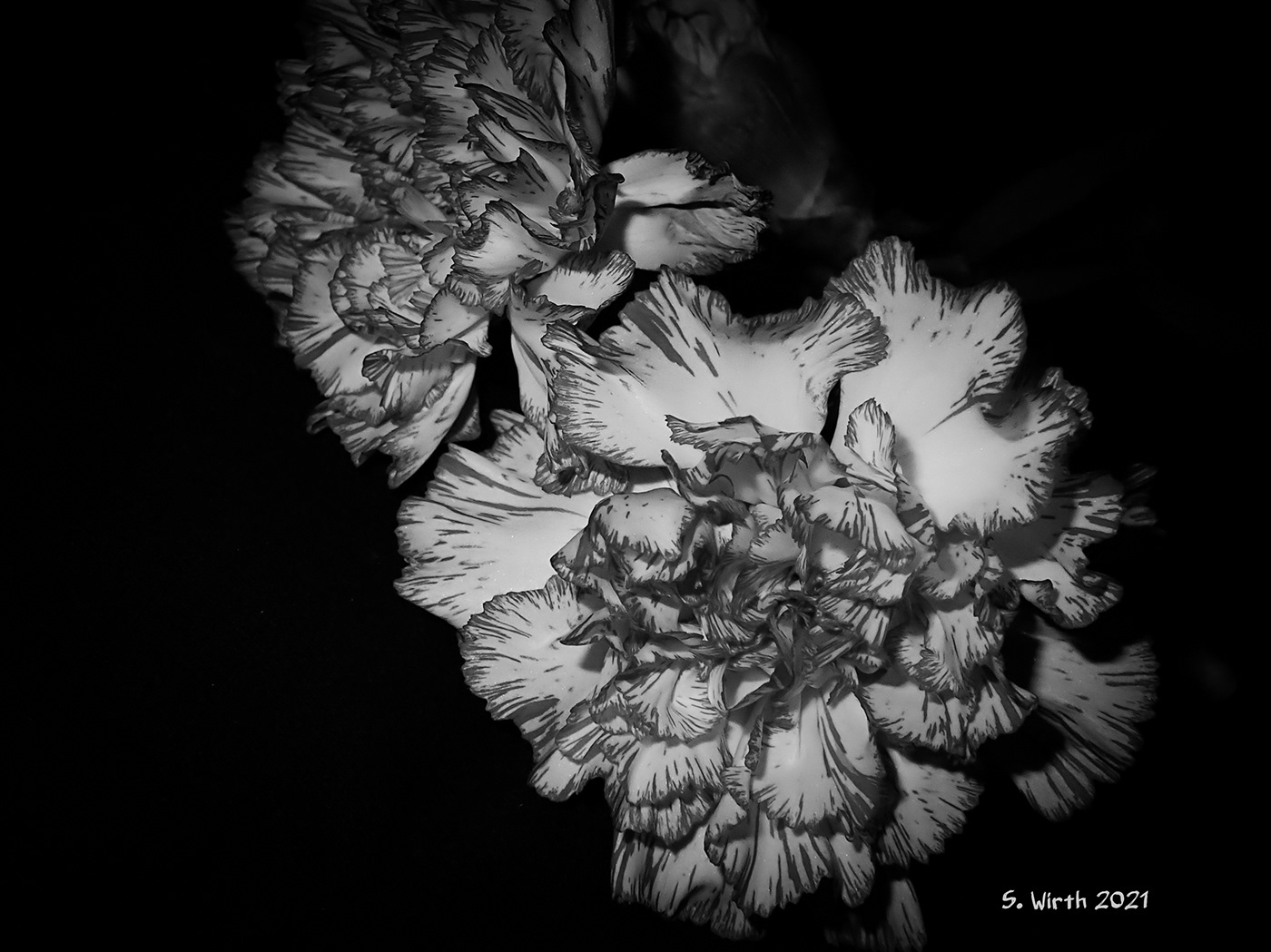
Rattling against each other, each straw ensuring its neighbor that it is still there, promising to survive the night like all the nights before, but this time some unfortunately don't.
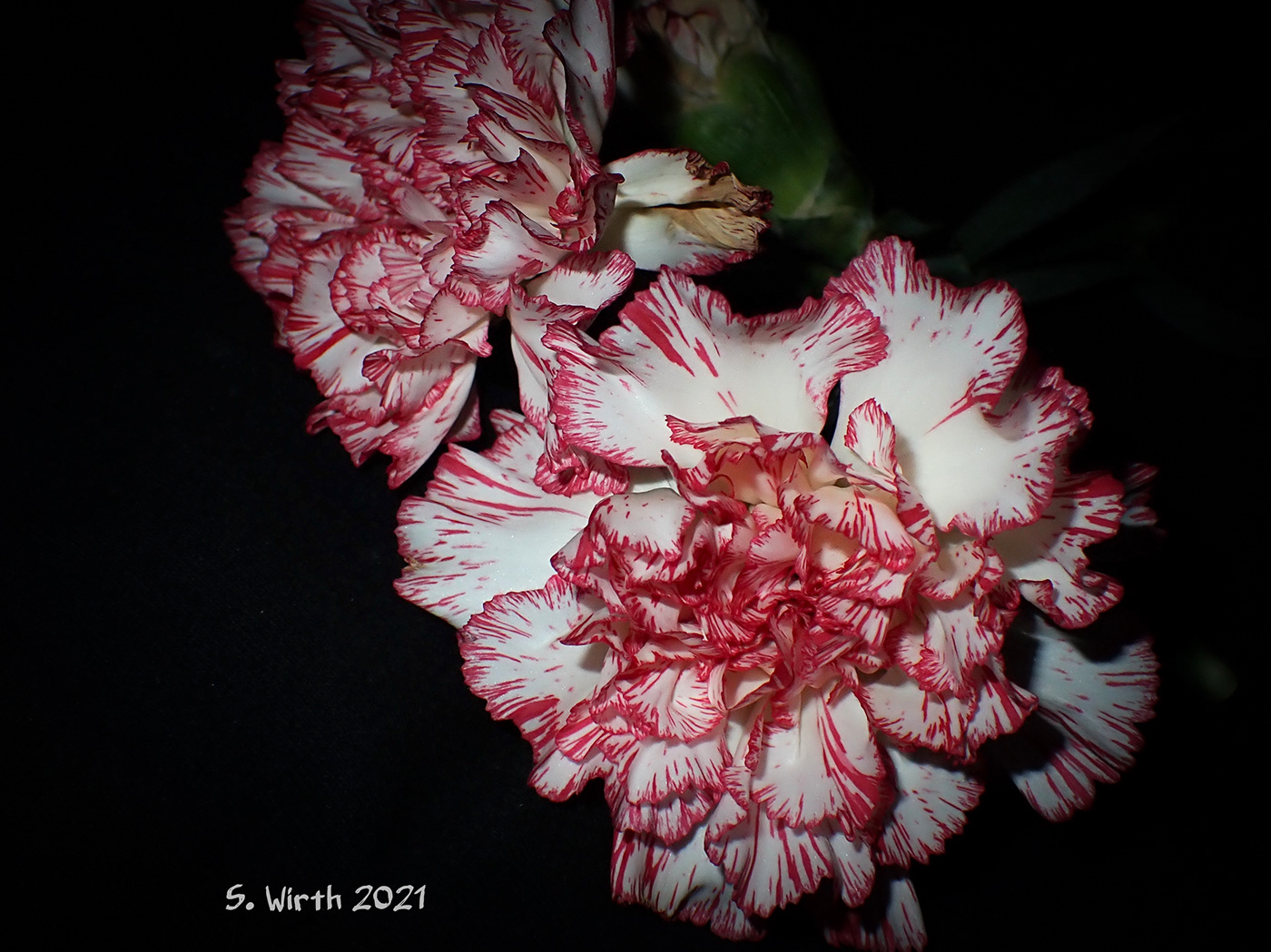
Dianthus caryophyllus

Blooming blossoms of a domestic carnation form
Domestication
The carnation flower Dianthus caryophyllus is a wild species of the clade Caryophyllaceae, originally native to the Mediterranean. But it's cultivation into different forms for different purposes goes back to ancient times.
The carnation flower Dianthus caryophyllus is a wild species of the clade Caryophyllaceae, originally native to the Mediterranean. But it's cultivation into different forms for different purposes goes back to ancient times.
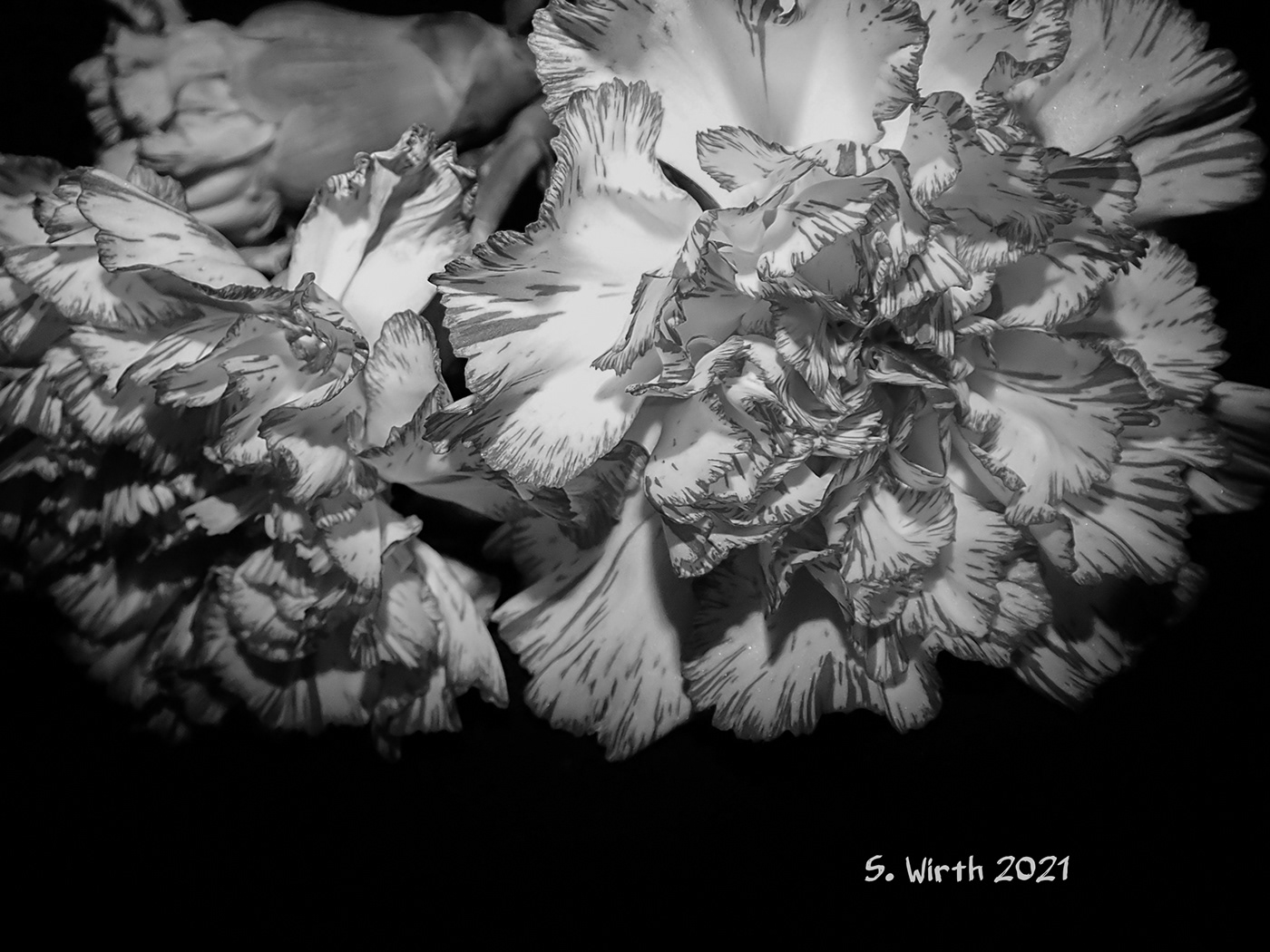
Recently, cut flowers for decoration dominate the market, biggest production site is in Colombia.
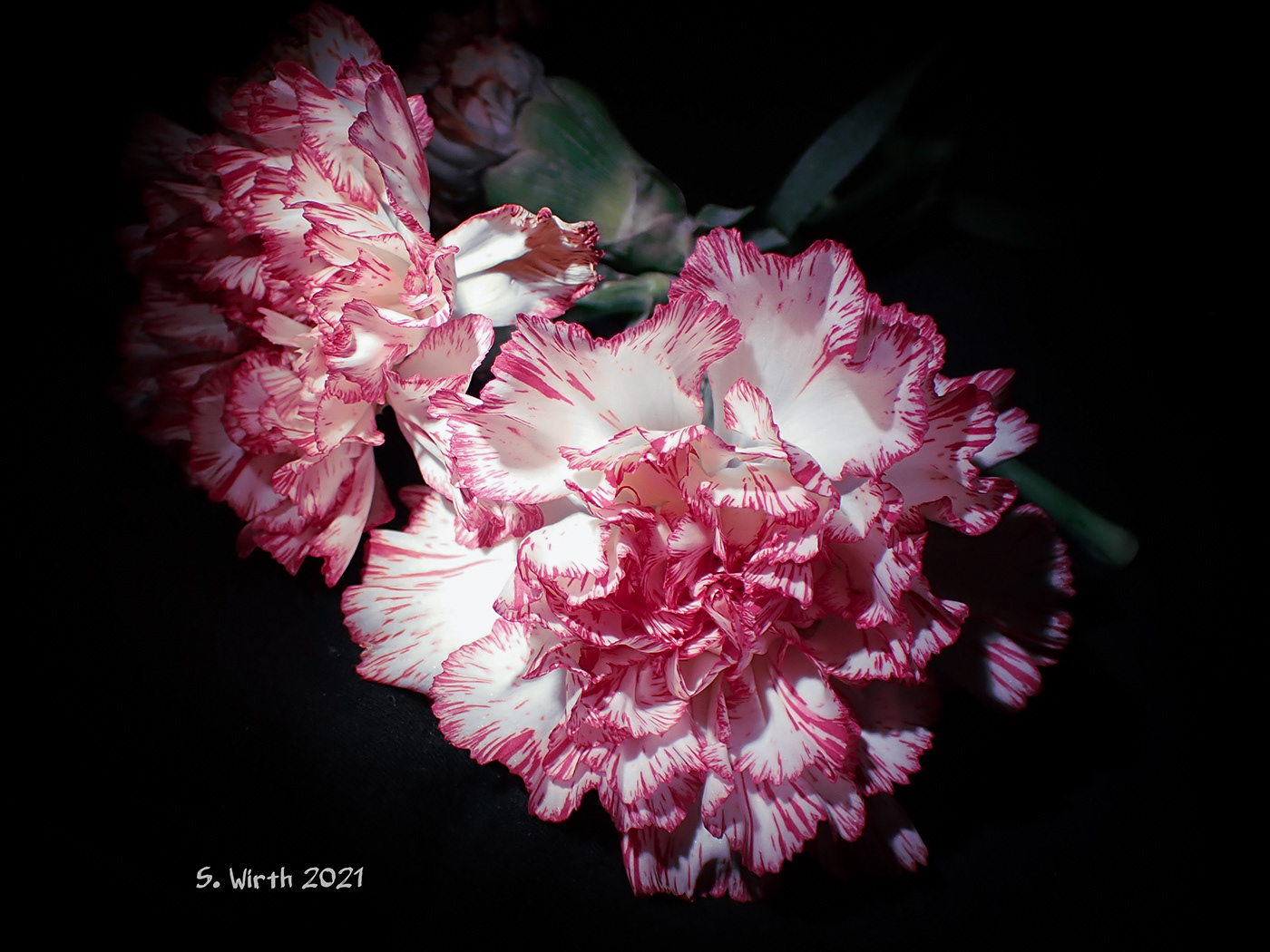
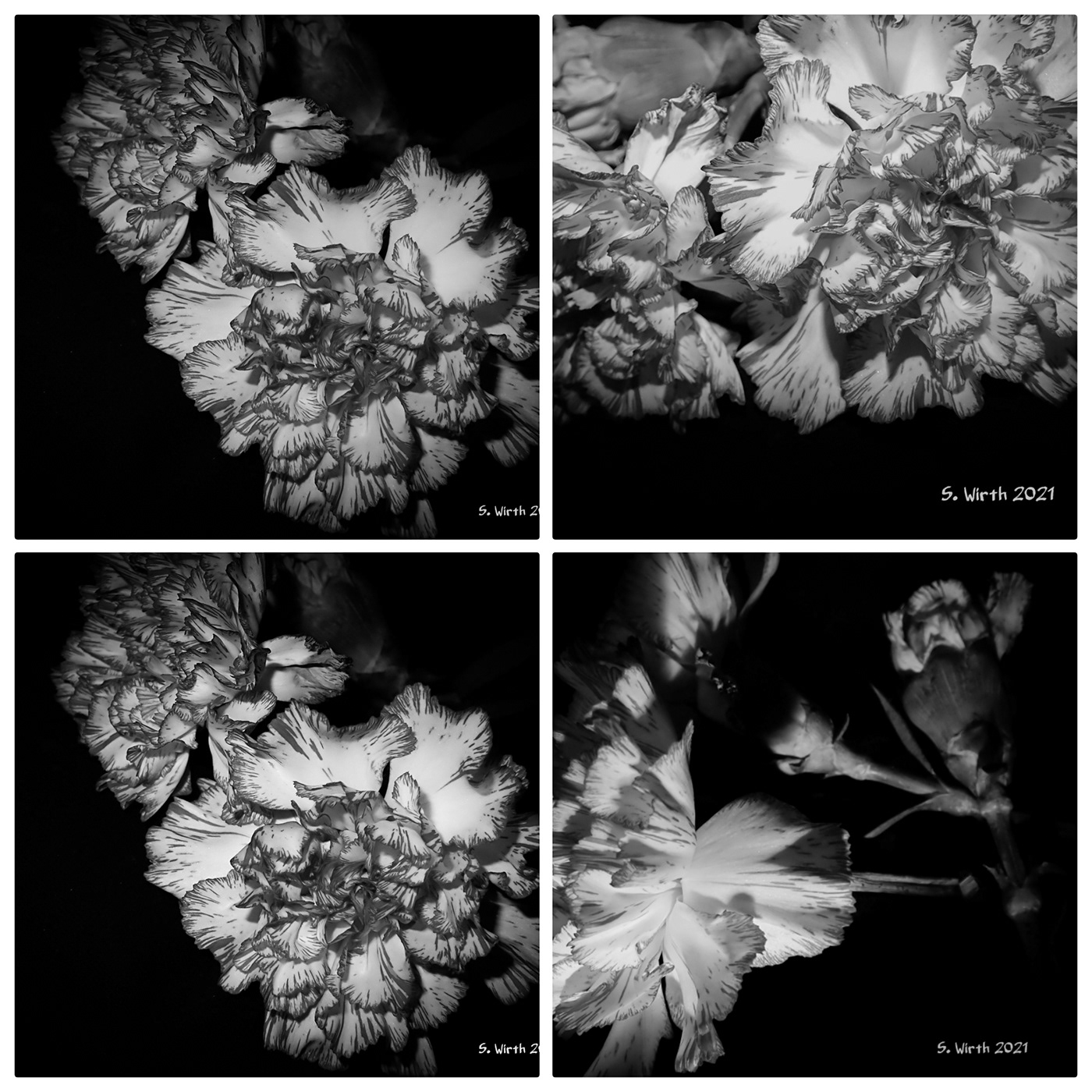
Macro perspectives to carnation blossoms in a dark surrounding
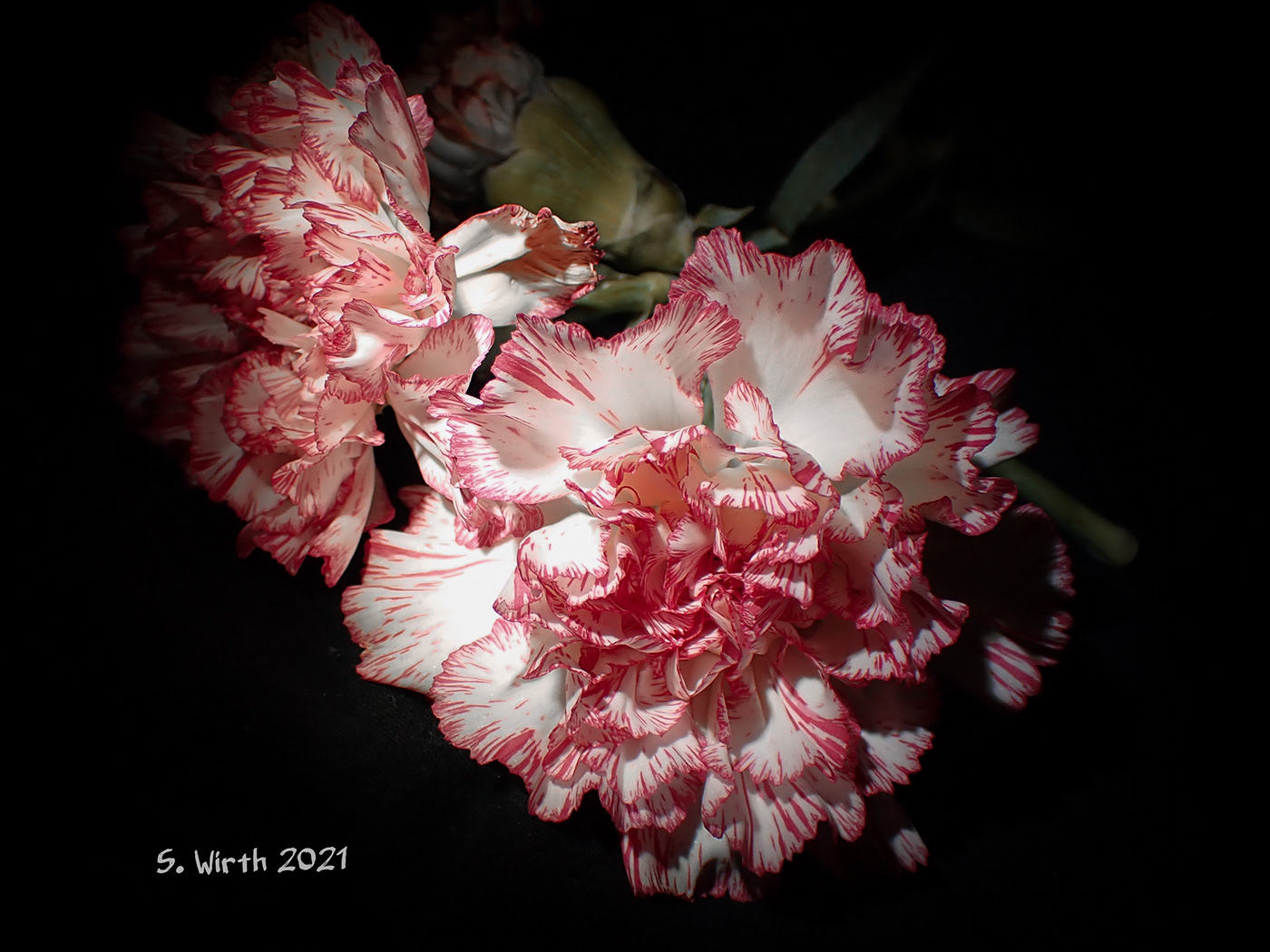
Cut off
A flower field in a glasshouse. Each stalk rattling against its neighbor, promising to survive the night. A gentle wind caresses their heads, while they are cut off by hardworking hands.
A flower field in a glasshouse. Each stalk rattling against its neighbor, promising to survive the night. A gentle wind caresses their heads, while they are cut off by hardworking hands.
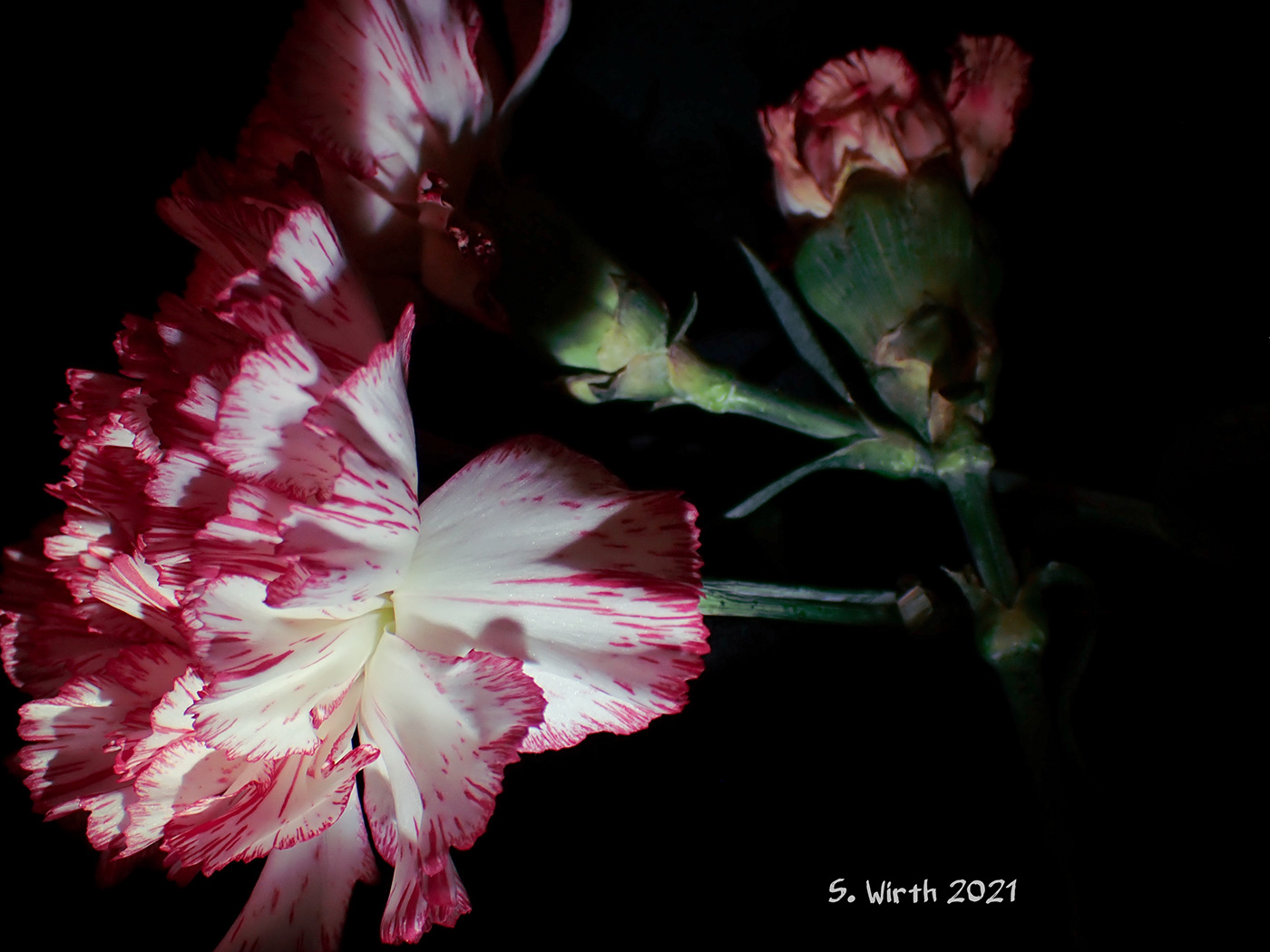
Side view of a blossom
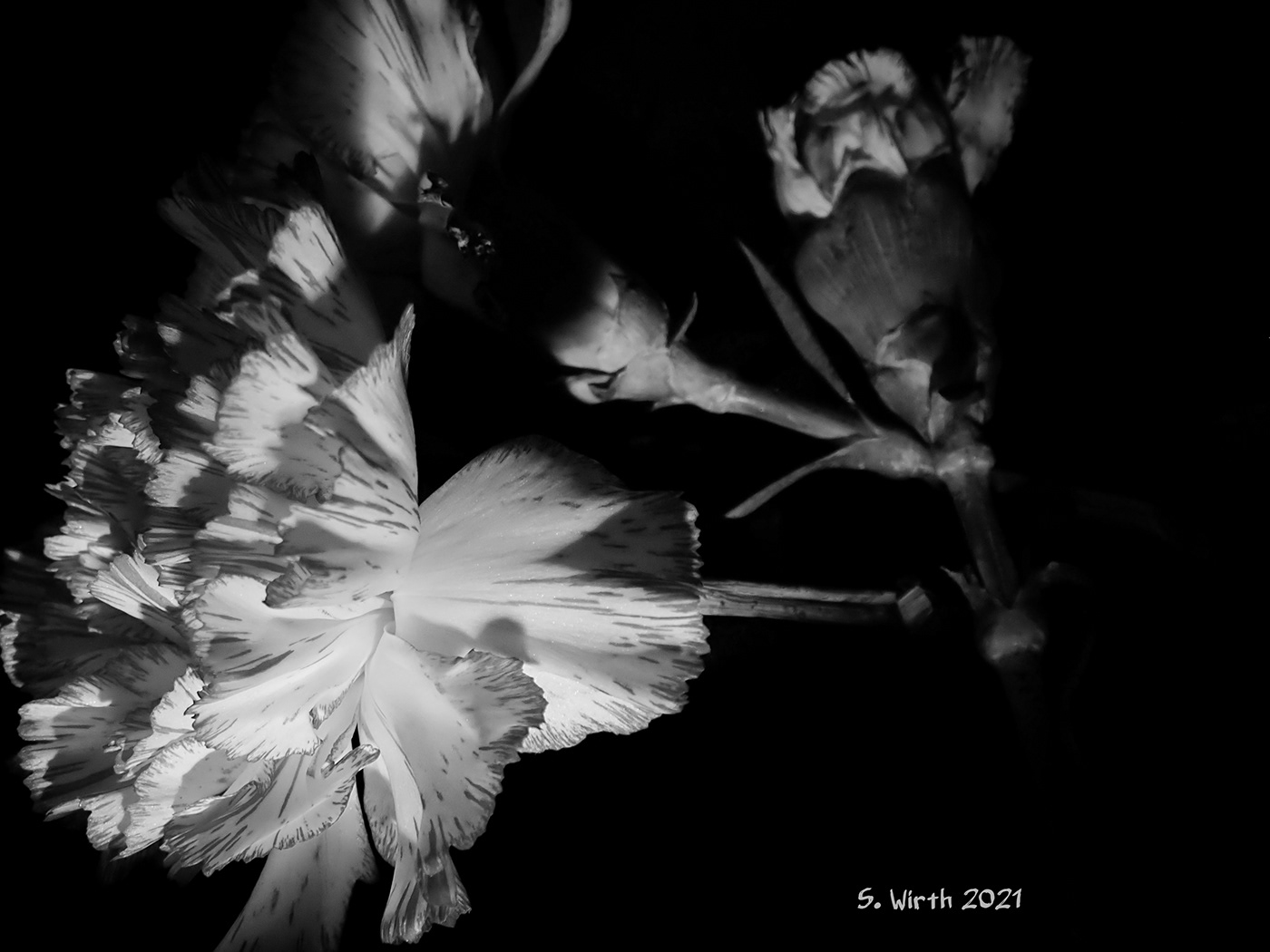
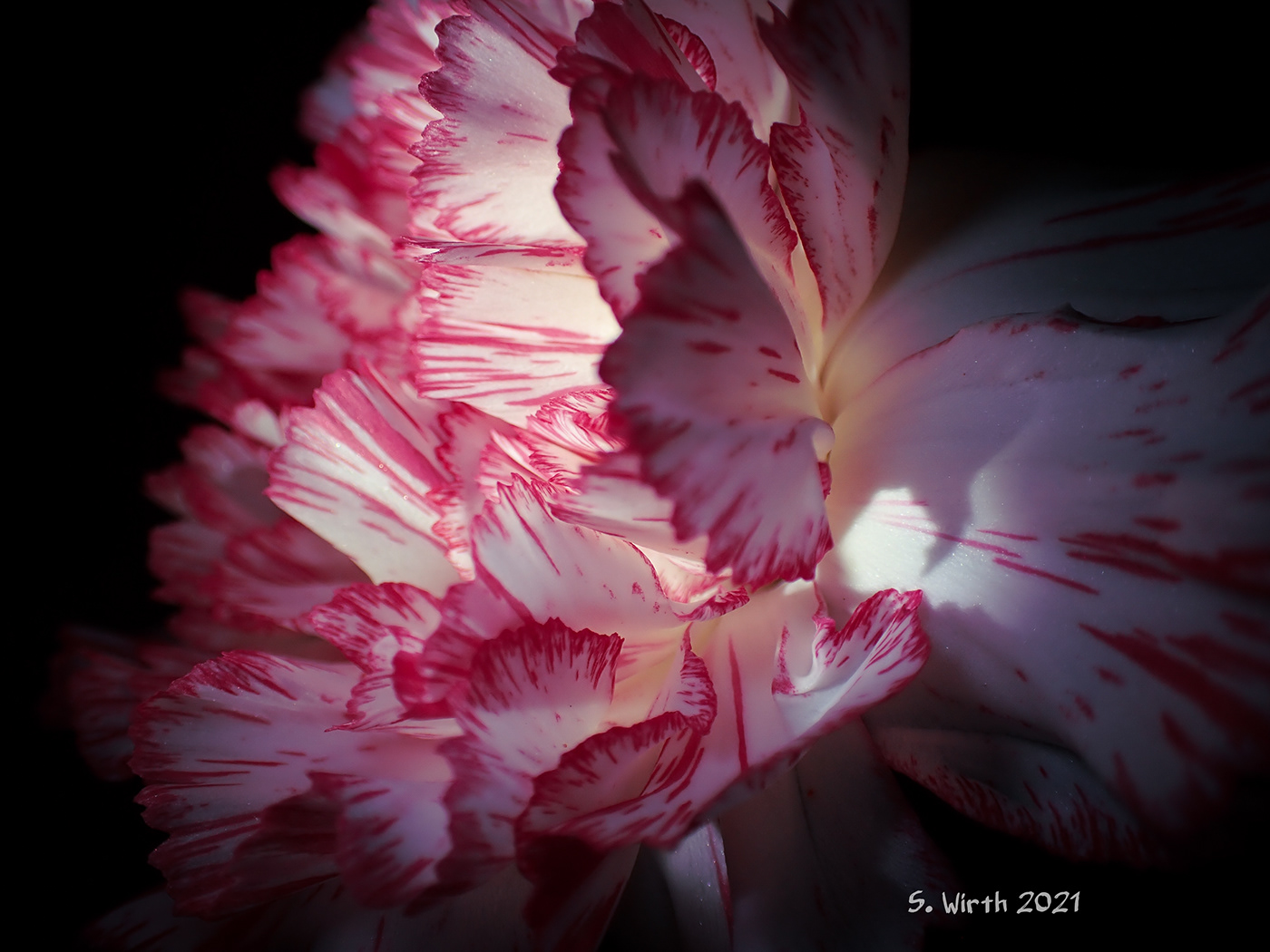
Macro details of petals

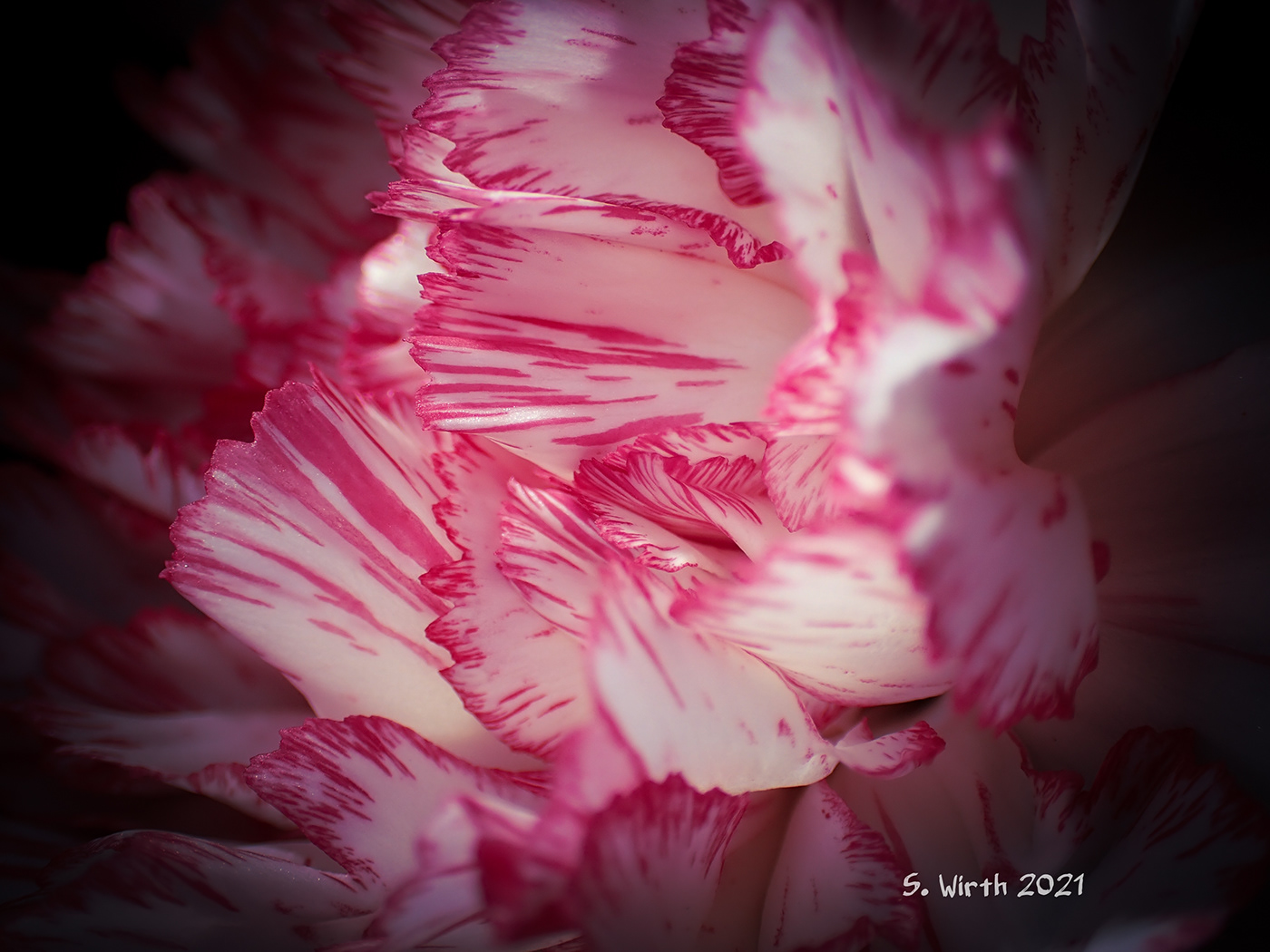
Beautyful death
Six flowers in a vase with fresh water, shining in a violet-pink. Still living or already living deads? Lively grace, but dying tissue. They shine in the diffuse light falling through the windows. And they use up their last energies to create just an temporary appearance of a pulsating life. They die.
Six flowers in a vase with fresh water, shining in a violet-pink. Still living or already living deads? Lively grace, but dying tissue. They shine in the diffuse light falling through the windows. And they use up their last energies to create just an temporary appearance of a pulsating life. They die.
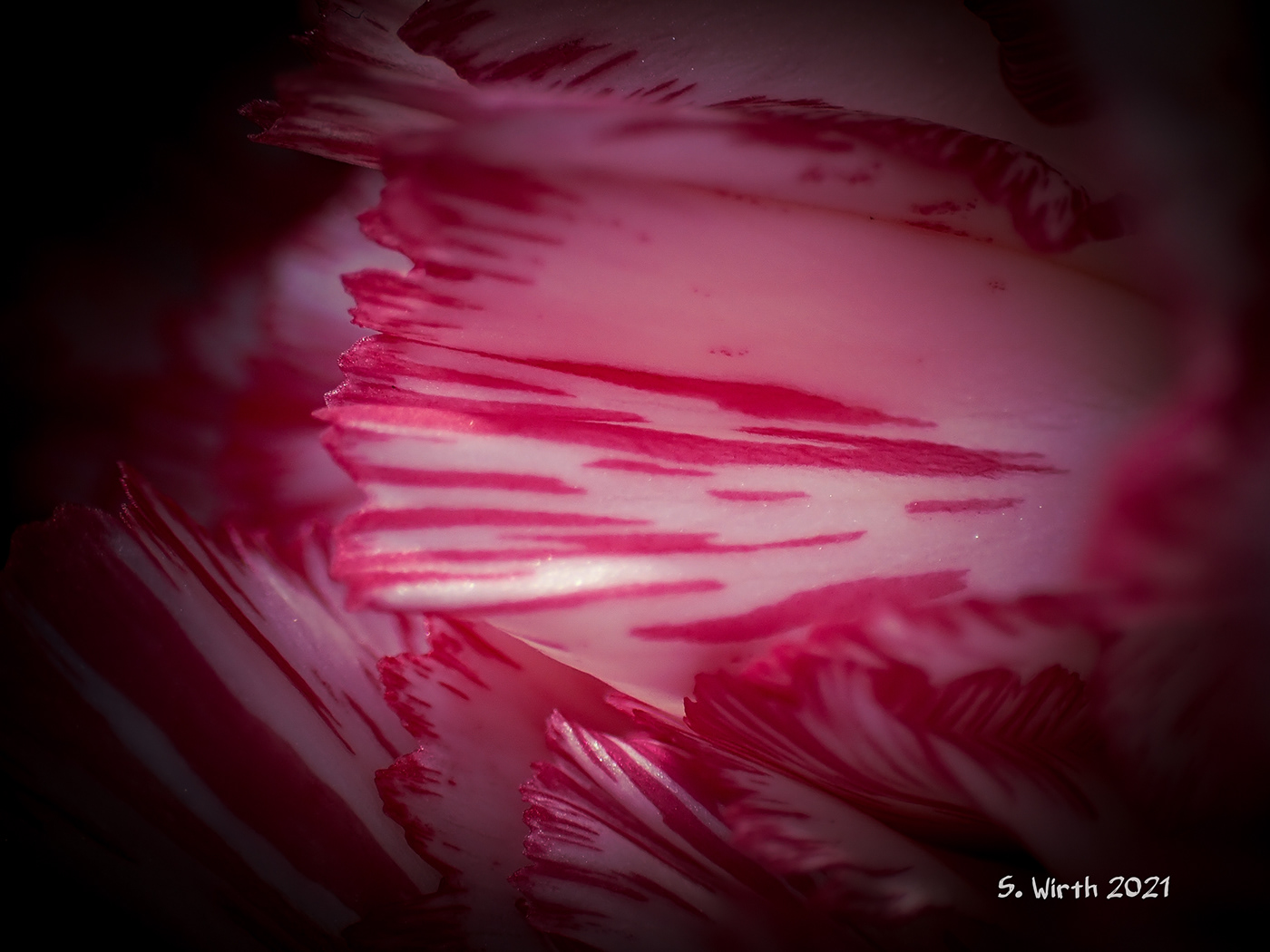
Petal shape details in a macro perspective
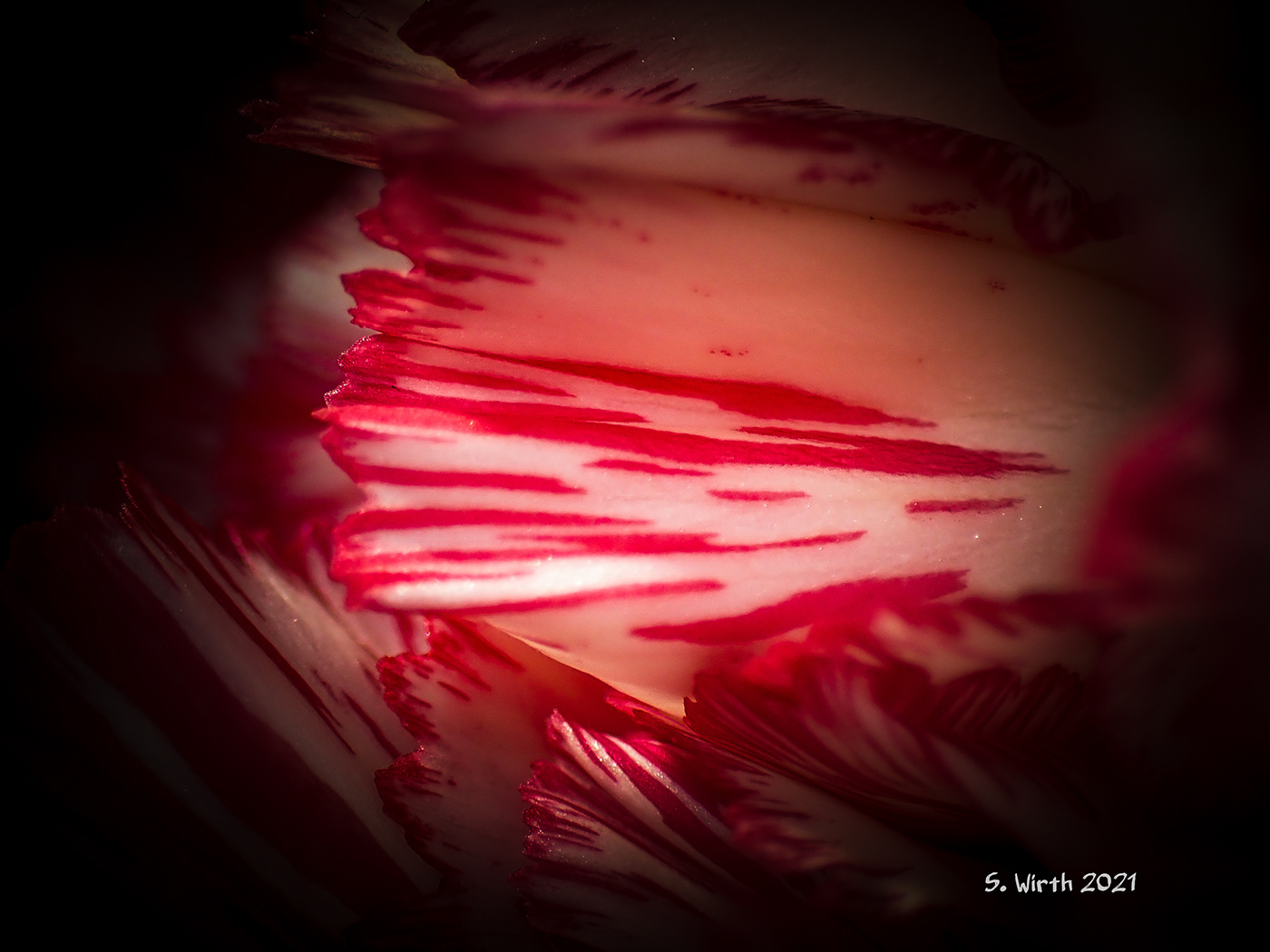
Tears
The last blossom perished, after it had for almost two weeks been suggestive of a normal vivid existence on a flower field under warming sun and a deep blue summer sky.
Wilting, that's how the visible process of perishing of a soft-tissue plant is named.
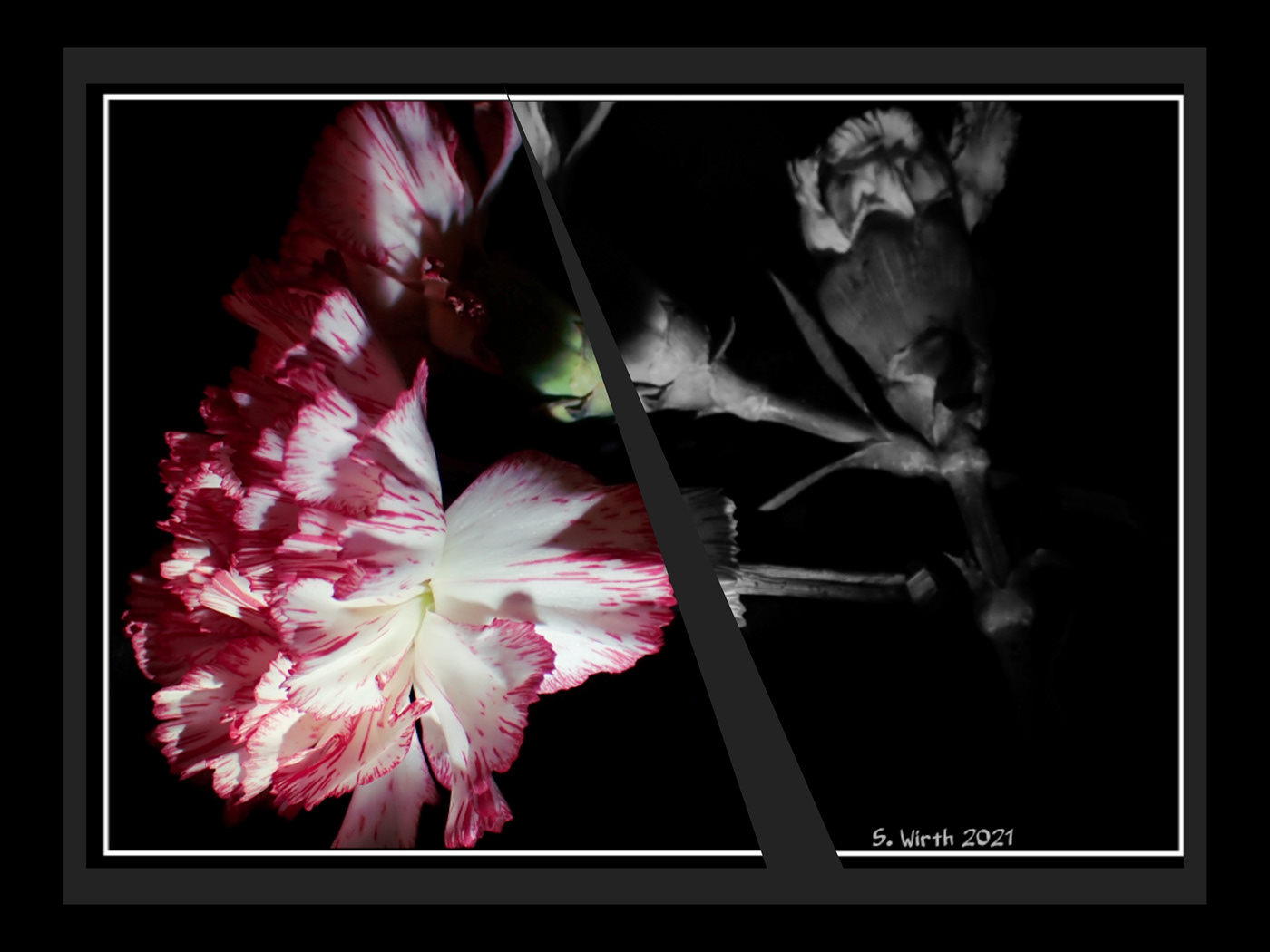
The difference between colors and shades of grey
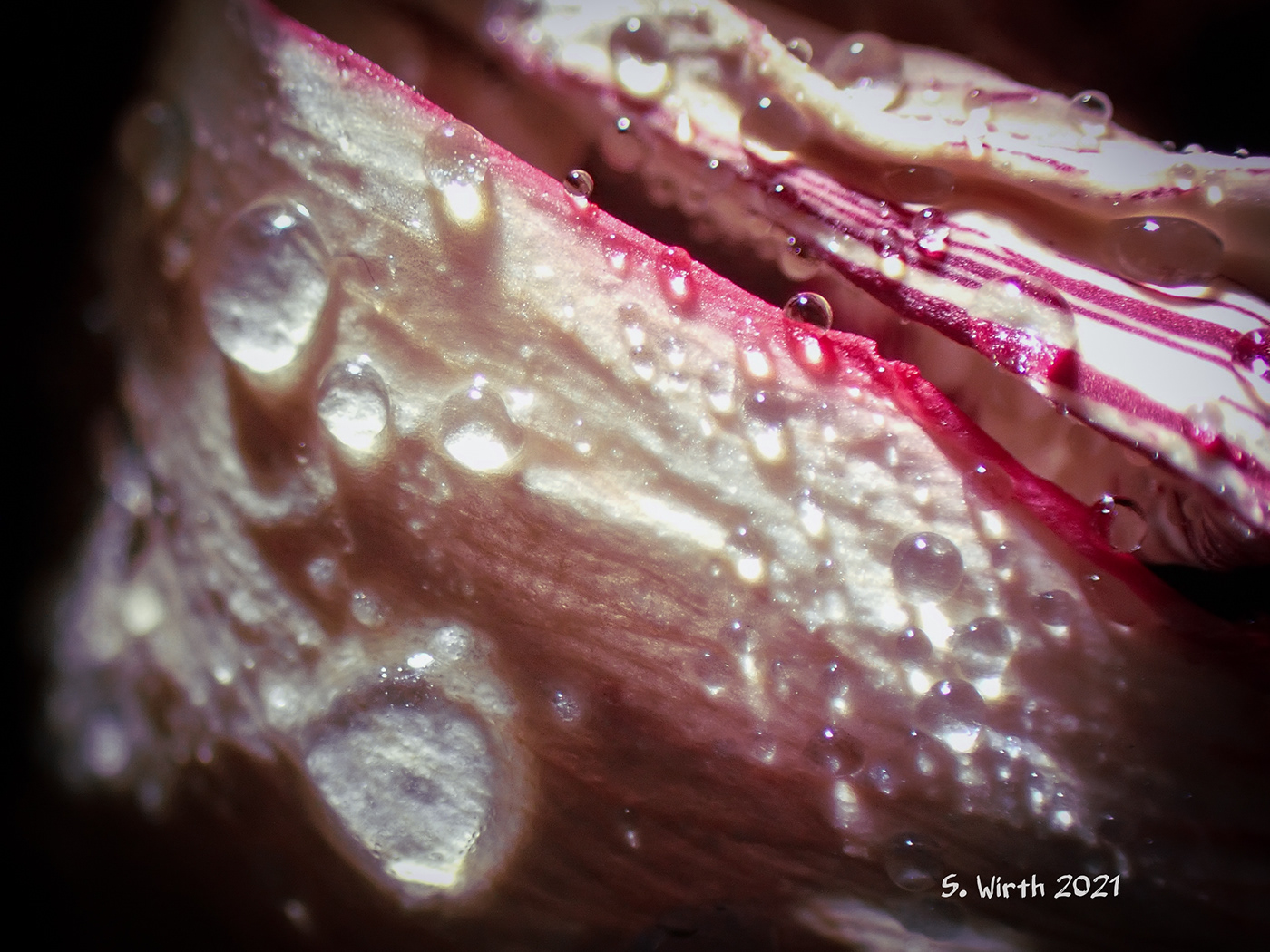
Water droplets on dried petals of a carnation blossom
My last blossom was no longer able to maintain its turgor pressure to keep the osmotic water transport going on. It's due to different reasons, for example beginning decomposing processes around the cut area, based on fungus and bacterial infections. Cell compartments shrink, solutes concentrate and metabolic processes are impeded.
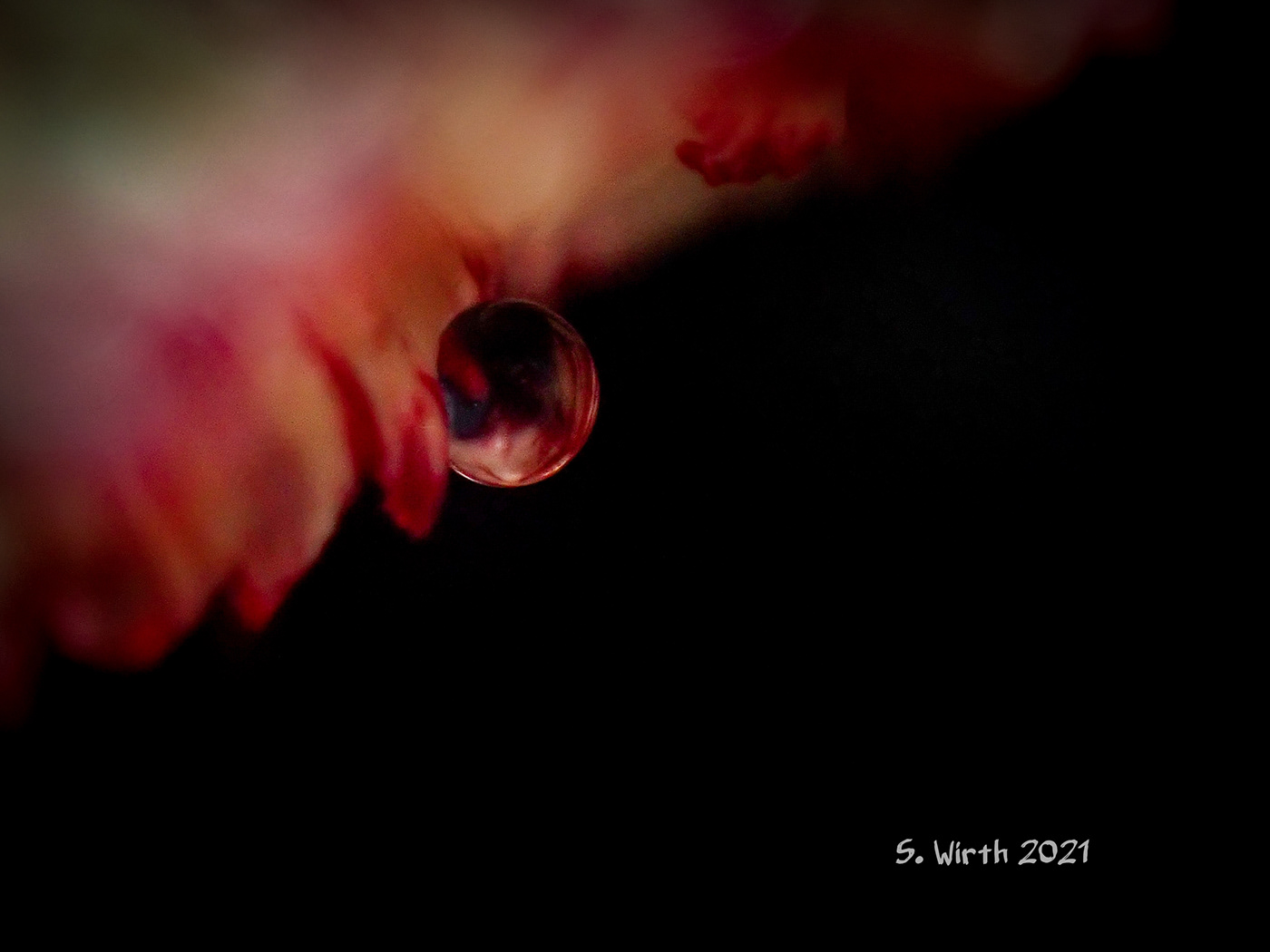
Water droplet on a carnation blossom
The clove withered more and more, but the brave piece of a plant stayed unexpectedly almost perfectly in shape. I left it in its vase without water, where it still stays until today.

And always, when some water splashes from adjacent living indoor plants accidentally got on the lonesome dried clove, they got formed into rounded droplets, which remained for a while, before falling down like shed tears for an almost forgotten memory.
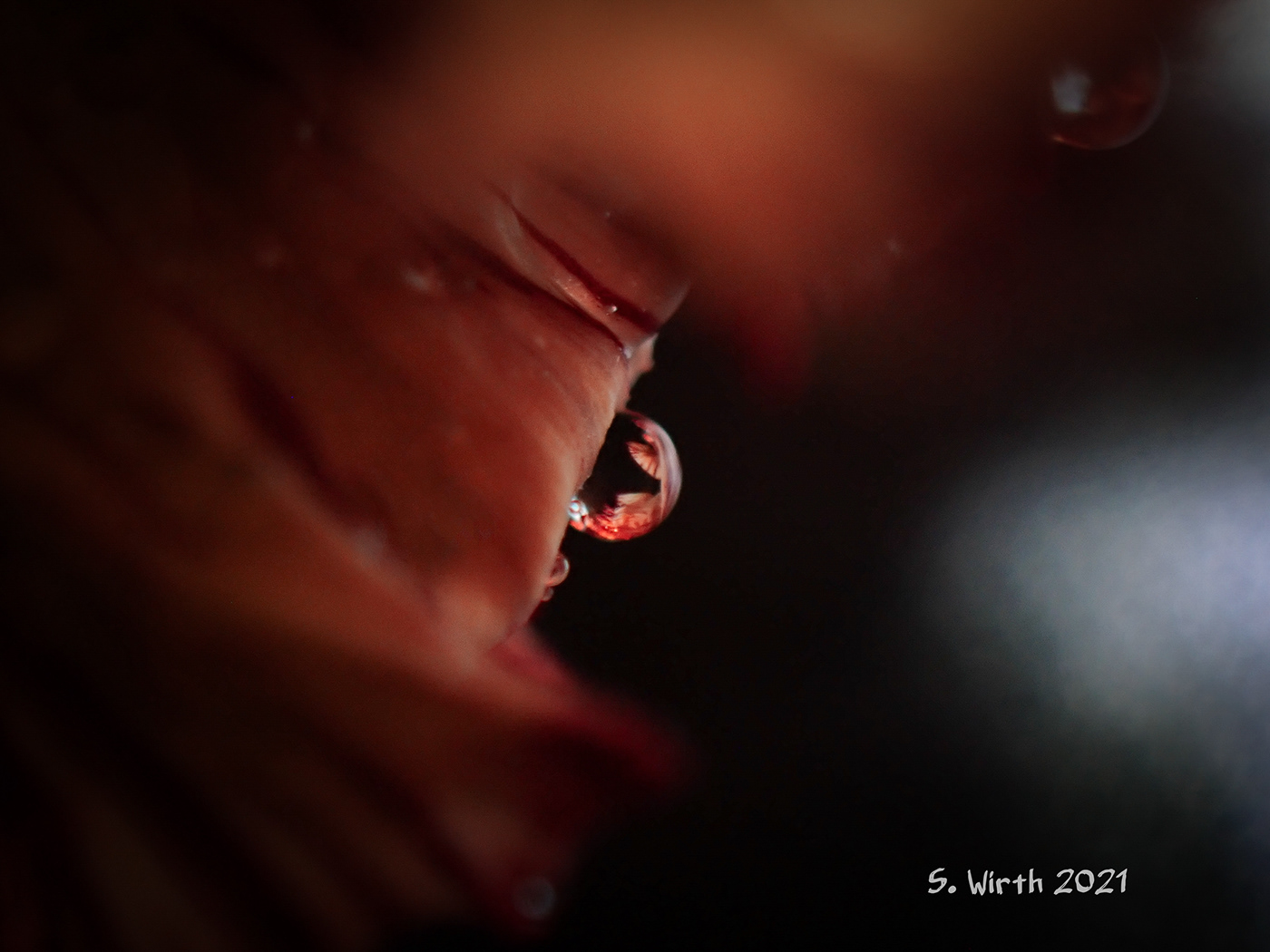
Water droplet on a carnation petal, mirroring neighboring petals of the same blossom
All copyrights Stefan F. Wirth, 5 March 2021, Berlin




